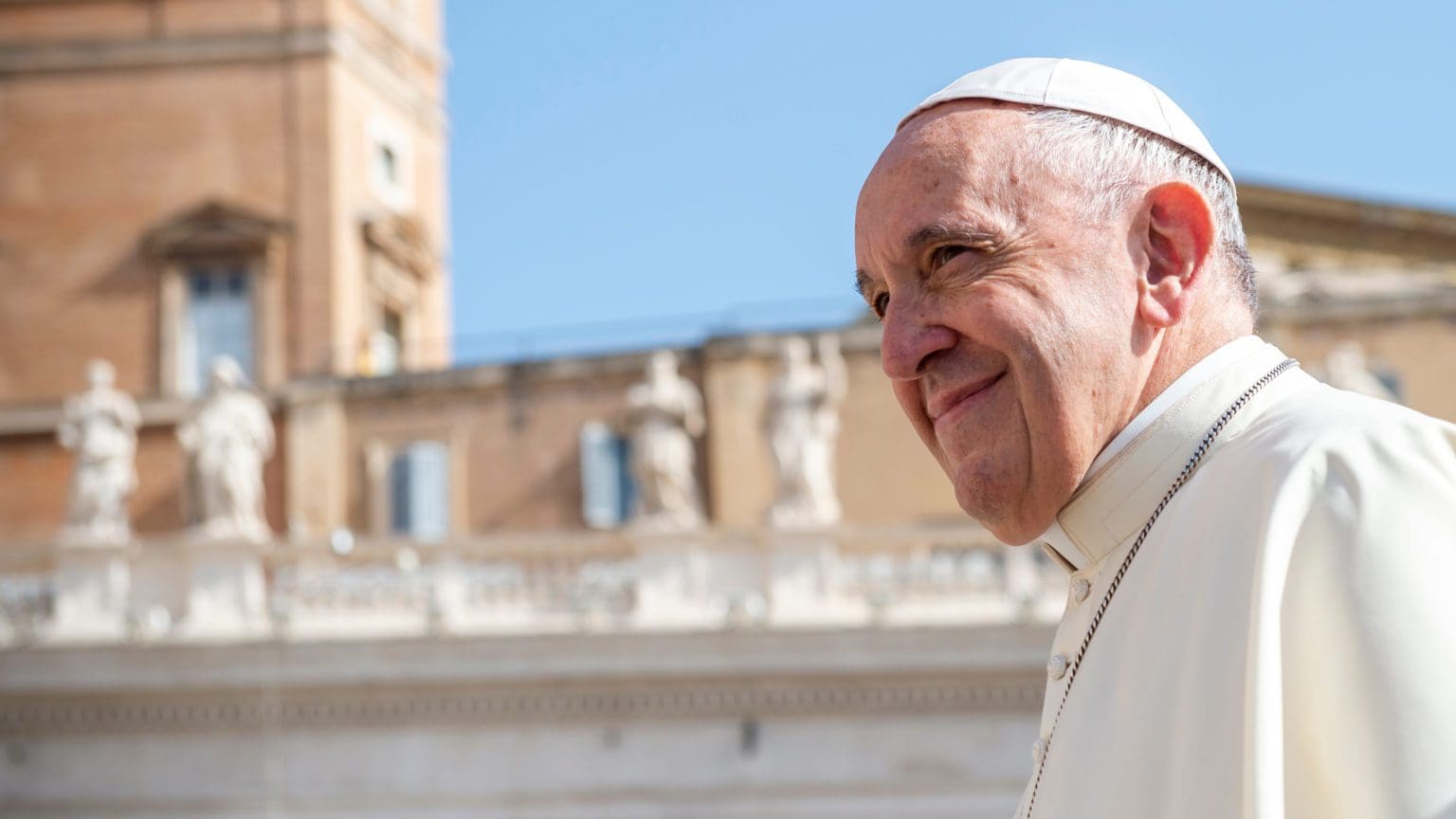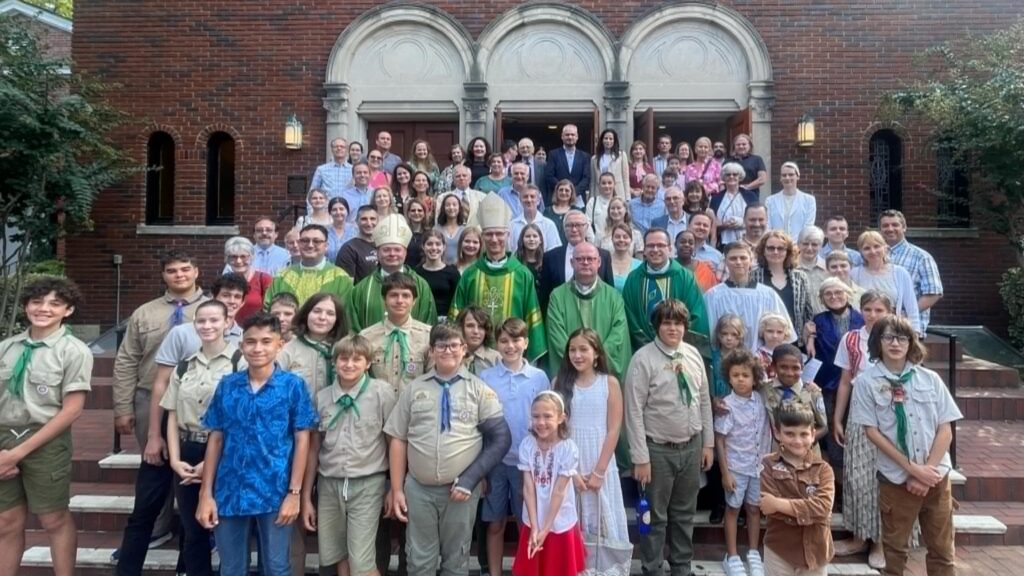Last week Pope Francis made an Apostolic pilgrimage to Canada to apologise for the Catholic Church’s cooperation with Canada’s ‘catastrophic’ policy of Indigenous residential schools, saying the forced assimilation of Native peoples into Christian society destroyed their cultures, severed families, and marginalised generations. In terms of what has been portrayed as an act of “genocide” by the institutional Church, Francis said:
‘I am deeply sorry…. I humbly beg forgiveness for the evil committed by so many Christians against the Indigenous peoples.’
One cannot deny the historical facts of wayward members of the Church committing atrocities. Yet the allegation of genocide committed by Catholic missionaries and members of the Church, specifically at the Kamloops school run by the Oblates and Sisters St. Anne, whether “cultural” or “physical”, is at best hypothetical, if not unfounded.
The Facts
In May 2021, the young anthropologist Sarah Beaulieu, after analysing the land near the former Kamloops residential school with ground-penetrating radar, launched the hypothesis, based on preliminary findings, of the existence of a mass grave, without having done even one excavation—not one corpse has since been found.
Beaulieu’s so-called findings were quickly picked up by the mainstream media and endorsed by Prime Minister Justin Trudeau. The narratives, such as ‘hundreds of children’ were ‘killed’ and ‘secretly buried’ in ‘mass graves’ —allegedly two hundred in total—immediately followed.
The truth of the matter is that no mass graves were discovered. In fact, on 11 January 2022, Jacques Rouillard, Professor emeritus of the Faculty of History of the University of Montreal, published on the Canadian portal Dorchester Review an extensive article stating that no child bodies were found in alleged mass graves, clandestine burials, or any other form of irregular burial in the Kamloops school. Behind the college buildings there are only simple cemeteries, where school students were buried, but also members of the local community and the missionaries themselves. The same Rouillard, on 1 April 2022, during an interview rebuffed the notion of a cultural and physical genocide of Indigenous Canadians, once again denying the existence of mass graves in residential schools.
The truth of the matter is that no mass graves were discovered
In their recent article titled ‘The False Narrative of the Residential Schools Burials’, published on 1 March 2022 in the Dorchester Review, Professor Tom Flanagan and Magistrate Brian Gesbrecht conclude that there is no trace of a single student killed in the 113-year history of Catholic residential schools. In fact, according to the Commission de vérité et réconciliation (CVR), the mortality rate in young people attending residential schools was on average about four deaths per year for every 1,000 young people and the main causes were tuberculosis and influenza. Notwithstanding the claims of the Commissioner of CVR, Marie Wilson, there are no records of Indigenous parents claiming that their children went to residential schools “never to be seen again.”
With regard to the accusation of ‘cultural genocide’, forced assimilation was in fact demanded by the Canadian Parliament, which passed the Gradual Civilization Act in 1857. The government entrusted mainly the Catholic Church, but also partly to the Anglican Church of Canada (up to 30 per cent), with the task of integrating young people into the country’s culture.
The charge levelled against the Catholic Church is that more than 150 000 Native children in Canada were taken from their homes from the 19th century until the 1970s, and placed in the schools in an effort to isolate them from the influence of their families and culture. In June 2008, the Canadian government made an official apology to the indigenous people and established the aforementioned CVR to investigate Indian residential schools.
The researchers of the Commission, despite the 71 million dollars received, and the fact that they worked for seven years, did not find the time to consult the archives of the Oblates of Mary Immaculate, the religious order that, at the end of the nineteenth century, began to manage the Residential Schools. Also, in his Histoire des pensionnats indiens catholiques au Québec, historian Henri Goulet showed that the Oblates were the only defenders of the traditional language and way of life of the Indians of Canada, unlike the Anglican government and church, who insisted on integration that uprooted the indigenous from their origins. This historiographical account is confirmed in the works of Professor Luca Codignola-Bo of the University of Genoa, who is one of the leading international scholars of Canadian religious history.
The Pope noted that the school system was ‘promoted by the governmental authorities at the time’ as part of a policy of assimilation and enfranchisement. But responding to criticism, he added that local Catholic institutions had a part’ in implementing that policy. How large a part exactly? There seem to be contradictory answers to that question, to say the least.
The Role of Catholic Missionaries
On the next to last day of his visit to Canada, as the Pope celebrated mass at Canada’s National Shrine, Indigenous activists unfurled a banner with the words ‘RESCIND THE DOCTRINE.’ What they demanded was that Francis rescind the ‘15th-century Papal edicts justifying colonialism.’ The protesters were referring to the Papal Bull Inter cetera (1493), which was more of a concession to keep Portugal and Spain from engaging in open confrontation with each other–they would have done so regardless of the Pope’s approval–, but it needs to be remembered that colonialism was practiced by all European powers until after the end of World War II.
The reason, however, why Catholic missionaries were present in Canada was because of their obedience to Jesus Christ’s command: ‘Therefore go and make disciples of all nations, baptising them in the name of the Father and of the Son and of the Holy Spirit, and teaching them to obey everything I have commanded you.’ (Matthew 28, 19-20) This is not colonialism but evangelisation – naturally, a number of absolute monarchs exploited religion to conquer and enslave unwilling populations.
Francis did praise, on the other hand, ‘those missionaries who, as authentic evangelisers, preserved indigenous languages and cultures in many parts of the world,’ including by producing the first grammar books in indigenous languages. In his sermon, Pope Francis praised the city’s first bishop, St. François de Laval, who in the late 17th century excommunicated liquor traders for plying their trade among the region’s indigenous population. He also said Laval’s conciliatory approach to other cultures should be a model for the church today in addressing the challenge of secularism.
While they were not mentioned, there have been Catholic martyrs who were savagely killed by Indigenous tribesmen for the faith. Of notable mention, the priests of the Society of Jesus, such as the Jesuit Father Jean de Brébeuf (1593-1649) who returned to Quebec in 1633 to the Iroquois mission with two fellow priests. From hut to hut, they catechised children and adults. But some sorcerers convinced the Iroqouis that the presence of the fathers caused drought, epidemics and every other misfortune. The Jesuits then decided to protect the catechumens by isolating them in Christian villages. The first was built four miles from Québec. It had its fort, its chapel, its houses, a hospital, and the residence of the Fathers.
The Iroquois, at the same time, were irreducibly hostile. They mutilated Father Isaac Jogues (1607-1646) and his coadjutor René Goupil (1608-1642) by pouring hot coals on them. In March 1649, the Iroquois martyred Fathers de Brébeuf and Gabriele Lallemant (1610-1649). Father de Brébeuf was pierced with red-hot rods and pieces of his flesh were stripped off by the Iroquois who roasted and ate them before his eyes. As the martyr continued to praise God, they cut off his lips and tongue and put burning embers down his throat. Father Lallemant had his head smashed and thereafter had his heart torn out. The Jesuit missionaries, known as the “Canadian martyrs” or “North American Martyrs” were canonised by Pope Pius XI in 1930.
There are also those Indigenous who willingly chose to become Catholic
There are also those Indigenous who willingly chose to become Catholic, like St. Kateri Tekakwitha, daughter of a Mohawk father and a Christianised Algonquin mother, who is the first Native American to be recognised as a saint by the Catholic Church. Harassed, stoned, and threatened with torture in her home village, she fled 200 miles (320 km) to the Christian Indian mission of St. Francis Xavier at Sault Saint-Louis, near Montreal. There she came to be known as the “Lily of the Mohawks” in recognition of her kindness, prayer, faith, and heroic suffering.
There are also those Indigenous who willingly chose to become Catholic, like St. Kateri Tekakwitha, daughter of a Mohawk father and a Christianised Algonquin mother, who is the first Native American to be recognised as a saint by the Catholic Church. Harassed, stoned, and threatened with torture in her home village, she fled 200 miles (320 km) to the Christian Indian mission of St. Francis Xavier at Sault Saint-Louis, near Montreal. There she came to be known as the “Lily of the Mohawks” in recognition of her kindness, prayer, faith, and heroic suffering.
So much more can still be said on both sides of the argument. But, as Professor Rouillard said:
‘It is incredible that preliminary research into an alleged mass grave in an orchard could have led to such a spiral of claims endorsed by the Canadian government and picked up by media around the world. It is not a conflict between history and Aboriginal [sic] oral history, but between the latter and common sense. Concrete evidence is needed before the accusations against the Oblates of Mary Immaculate and the Sisters of St. Anne can be written down in history. The exhumations have not yet started and no remains have been found. A crime committee requires verifiable evidence, especially if the accused are long dead.’








